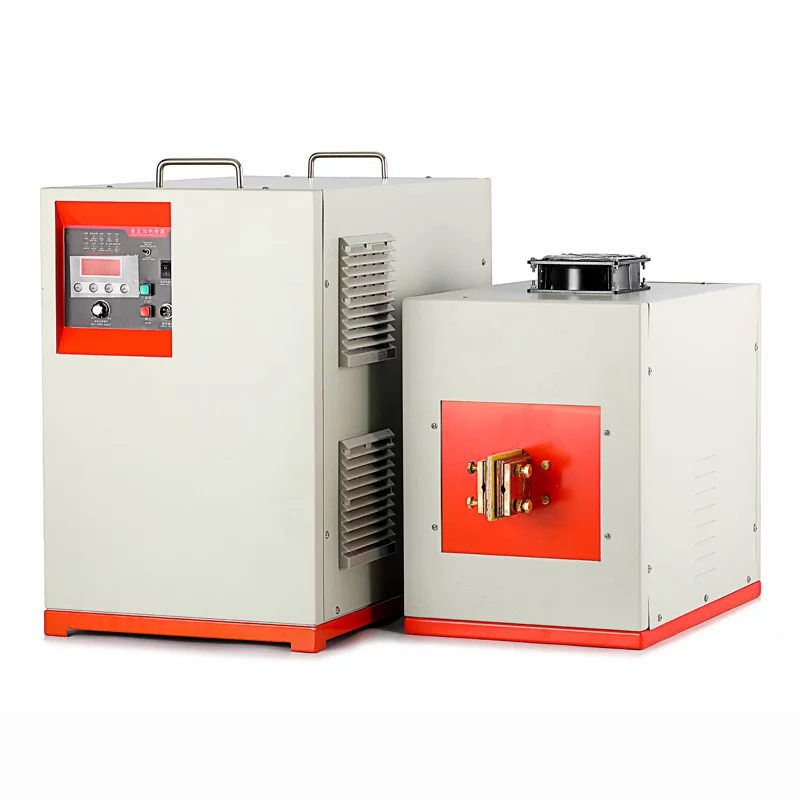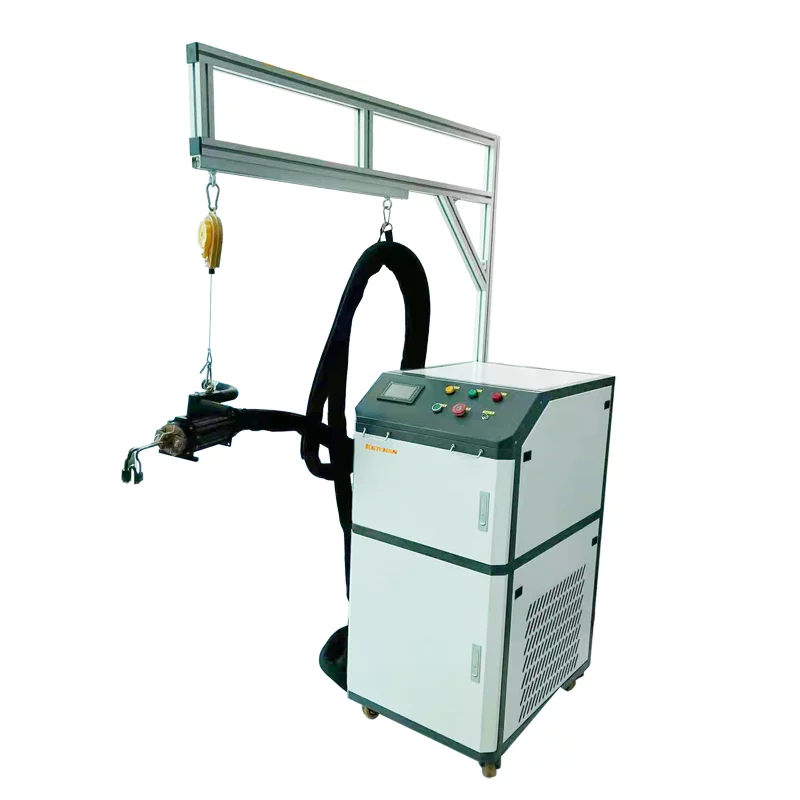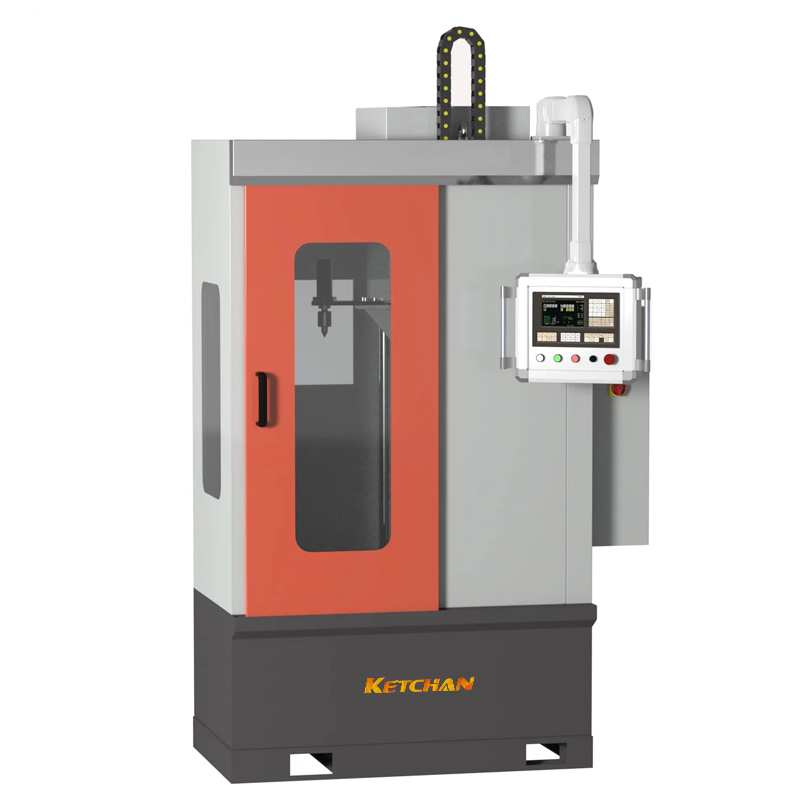The high frequency quenching of the workpiece also adopts the method of simultaneous heating. The difficulty of machining lies in the limitation of equipment power and current frequency.
High-frequency quenching is a short time rapid heating, which needs to be heated to a very high temperature in a very short time and needs enough heating power as the basis. The larger the surface that the workpiece needs to be heated, the greater the power required. When the heated surface reaches a certain degree, it will be difficult to realize simultaneous heating due to the limitation of equipment power.
When the workpiece is heated by induction, the current penetration depth is determined by the current frequency. This principle makes the current frequency become the main factor to determine the depth of the hardening layer. The current frequency of high-frequency quenching equipment is generally fixed, such as the current frequency of high-frequency equipment is 200 ~ 300kHz, the corresponding thermal penetration depth is 0.9 ~ 1.1mm, which limits the further deepening of the hardening layer depth.
The traction pin of a product is a key part of the product, and the material is 40Cr alloy structural steel. The outer circular surface of F 89mm is required to be quenched at high frequency. The quenching hardness is required to be 50 ~ 60HRC, and the depth of the hardening layer is 2.5 ~ 4.5mm. The workpiece has a large size of the quenching surface, which requires a large power for heating. Besides, the problem with greater influence on heating is that the quenching part is the groove part of the workpiece, and the production of the inductor is also a big difficulty. Such as the production of sensors by a conventional method, namely the sensor inner diameter slightly larger than quenching surface diameter, the sensors must be on-site production, very trouble, and workpiece quenching have to damage the sensor to each workpiece surface of the high-frequency quenching must make corresponding a sensor, there is also the production of each sensor error; If the inner diameter of the inductor is larger than the adjacent section diameter, that is, greater than 111mm, then the distance between the inductor and the quenching part increases by 11mm, and the induction heating efficiency will be significantly reduced. In terms of the hardening layer, the depth range of 2.5 ~ 4.5mm is 2.5 ~ 4.5 times of the normal heat penetration depth. In order to improve the depth of the hardening layer, the principle of heat conduction can be used appropriately, that is, the heat conduction characteristic from the surface to the center can be used to increase the thickness of the heating layer. However, the method relying solely on heat conduction requires a large temperature difference from the surface to the inside. When the required depth of the hardening layer reaches the quenching temperature, the surface temperature is already too high, resulting in surface tissue overheating, overburning and other defects.
(2) Quenching process scheme
In order to finish the quenching of the workpiece, a special inductor is made, and the process control is strengthened and the intermittent heating method is adopted.
Many characteristics, combined with traction pin production way, change the traditional sensors will make semicircle for sensors and overcome the traditional sensor for high frequency quenching of the above difficulties, the workpiece can be as small as possible distance between sensors and heating surface, and can easily make the workpiece quenching with sensors from. In the specific operation, the workpiece is concentric rotation relative to the inductor, so as to achieve the special effect of heating the semicircle in an instant and heating all the hardened surfaces as a whole.
The previous has been described, steel material in the heating to a certain temperature will lose magnetically, heating speed will drop several times. In the actual heating process, when there is a thin layer on the surface that exceeds the magnetic loss point, the eddy current intensity at the internal junction adjacent to the thin layer will suddenly rise and become the part with the fastest heating speed, resulting in the phenomenon that the heating speed of the high temperature surface decreases, and the temperature at the junction is accelerated, and then moves inward. This phenomenon is beneficial to increase the depth of the hardening layer, but the surface heating rate in the high temperature area is much faster than the parts within the boundary, the surface overheating, the overburning tendency is still very serious. At this point, the need to find out the voltage, heating speed, and other parameters of the optimal configuration, strict control of the heating process, under the premise of ensuring quality as far as possible to increase the depth of the hardening layer.
The traction pin requires the depth of the hardening layer to be large, and the simple parameter control is still lacking in meeting the technical requirements completely, so some other techniques should be adopted. Intermittent heating, that is, when the quenching temperature is not reached, the temporary stop of heating, so that the workpiece surface heat conduction more inward, and then start heating again. This is equivalent to increasing the heat conduction time, reducing the surface to the internal temperature gradient, repeated several times, the surface temperature will not be too high and cause overheating, overburning. To achieve a more uniform quenching temperature within 2.5 ~ 4.5mm from the surface inward.
(3) Actual effect
After taking measures such as improving sensor design, optimizing process parameters, intermittent heating, etc., the hardness of traction pin surface after high-frequency quenching can be stable to about 55HRC, the depth of the hardening layer is more than 3mm, the use of high-frequency quenching to meet the requirements of the depth of the hardening layer suitable for intermediate frequency quenching. Because of the improvement of the inductor, the workpiece can be quenched continuously one by one, which effectively improves the working efficiency.
3. Matters needing attention
In order to ensure the processing quality, the following matters should be noted:
(1) Equipment maintenance is extremely important. The distance between the high frequency inductor and the workpiece should be as small as possible in order to reduce its power loss and ensure the power demand for simultaneous heating to the maximum extent.
(2) The most common form of inductor is to make a spiral shape with a red copper pipe bend. When designing and making such inductor, the red copper tube with a larger diameter should be used as far as possible and the number of turns should be reduced to reduce inductive reactance and ensure heating efficiency.
High frequency induction quenching is a complicated process, which belongs to the special heat treatment category in heat treatment, but it is more difficult to realize simultaneous heating. In specific operations, must consider equipment power, working frequency, sensors and heat treatment parameters, organization transformation, quenching medium and material factors such as the cooling way, to achieve the best fit of these factors, maximize equipment potential, as far as possible to satisfy many varieties, small batch workpiece quenching needs at the same time.





